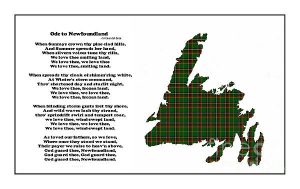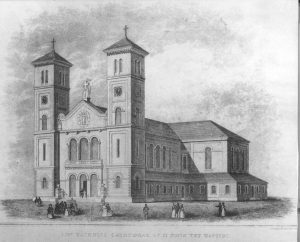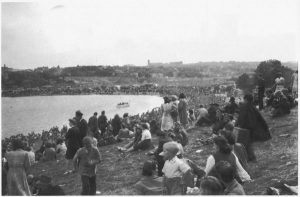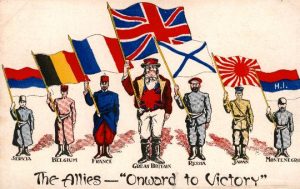Archival Moment
August 19th, 1839
![Photo Credit: The Rooms SP 1; Portrait of elderly man in cravat and gown (1860 and 1880] Daguerreotype portraiture was popular in Newfoundland in the 1840’s.](http://104.236.223.150/wp-content/uploads/2014/08/Oldest-Pictures-300x193.jpg)
Photo Credit: The Rooms SP 1; Portrait of elderly man in cravat and gown (1860 and 1880]
Daguerreotype portraiture was popular in Newfoundland in the 1840’s.
August 19 is celebrated globally as World Photography Day. An annual worldwide celebration, the day is dedicated to the art, craft, science and history of photography. In the modern world, the World Photography Day aims to inspire photographers across the planet to share a single photo with a simple purpose of sharing their world with the world.
In Newfoundland photography was established as early as March 10th, 1843 with the following advertisement appearing in the local St. John’s paper the Public Ledger:
Daguerreotype!
MESSERS William VALENTINE & Thomas DOANE beg leave to call the attention of the inhabitants of St. John’s and its vicinity, to an Art which has attained great celebrity and popularity in almost every city of Europe and America.
They have completed an apartment fitted for the purposes of Daguerreotype Portraiture, and have made other improvements and arrangements, by means of which they are confident of producing pictures of exquisite beauty.
The Daguerreotype Rooms, at the Golden Lion Inn, will be opened on MONDAY, at 10 o’clock, and will remain open daily from 10 to 4 o’clock. Persons unacquainted with the art, are respectfully invited to call at the Rooms, and examine Specimens. Portraits taken in any state of the weather.
The first known photographs made around Newfoundland and Labrador were tied to the fishing industry. In 1857 Paul-Émile Miot, a French naval officer aboard the Ardent, captained by Georges-Charles Cloué, made photographs of the waters and land around Newfoundland and Labrador. Miot may have been the first to use photographs in the production of hydrographic maps.
During subsequent trips to Newfoundland, he also made a series of portraits that would be published as woodcuts in Le Monde illustré, Harper’s Weekly and Illustration. Important both for their practical information and as political tools, Miot’s images also provide evocative glimpses of Newfoundland’s past.
The first commercially available 35mm film camera was developed only 90 years ago. The digital camera became popular just 20 years ago and 20 years ago, camera phones didn’t exist. Today, everyone is impacted by the influence of photography.
Recommended Archival Collection: Search the online database to view thousands of digital photographs. https://www.therooms.ca/collections-research/our-collections The Rooms is very interested in your photographic collections especially daguerreotype portraiture. Talk to us about your collection.
Recommended Reading: Antonia McGrath, Introduction to Newfoundland Photography, 1849-1949 (St. John’s, NL: Breakwater Books, 1980).














